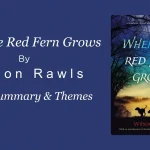What is Motif?
A motif is a recurrent element of significance that can be an image, symbol, phrase, or idea in a story. Motifs are the building pieces that support a theme by recurring throughout the story, in contrast to the central theme, which stands for the main idea or message of the narrative.
Difference Between Motif and Theme
Though they are closely connected, motifs and themes have distinct functions. The main idea or lesson that the writer wishes to get across, such as love, grief, or betrayal, is known as the theme. On the other hand, a motif is a particular element that aids in expressing and reinforcing the theme (such as a recurrent item or phrase).
The Purpose of a Motif
How Motifs Deepen a Story
A motif is an image, phrase, or symbol that appears repeatedly and serves to emphasize a story’s ideas. Authors can establish a deeper emotional connection with their readers and give additional layers of significance to the plot by including motifs into their works. Motifs aid in emphasizing main ideas or conflicts and increase memorability. A well-placed motif, no matter how overt or subtle, amplifies the impact of the story and provides readers with hints about its deeper meanings.
Why Authors Use Motifs in Writing
Motifs are used by writers to reaffirm major concepts and themes that run throughout their works. A motif is a recurrent element that gives the story depth.
Examples of these elements include objects, phrases, and symbols. Writers establish a deeper emotional connection and make it easier for readers to understand underlying themes by reusing motifs.
In addition, themes heighten the suspense, create anticipation, and give the narrative a cogent framework. By using this strategy, important ideas become more effective and memorable, which enhances the reader’s experience.

How to Identify Motifs in a Story
Common Examples of Motifs in Literature
Motifs in Classic Literature
Many classic works of literature rely on motifs to underscore their central themes. For instance, in F. Scott Fitzgerald’s The Great Gatsby, the green light serves as a powerful motif representing hope and unattainable dreams. Similarly, the motif of blood in Shakespeare’s Macbeth symbolizes guilt and violence.
Modern Examples of Motifs
In more recent works, motifs continue to play a significant role. In J.K. Rowling’s Harry Potter series, the motif of light and dark is ever-present, symbolizing the struggle between good and evil. Similarly, in George Orwell’s 1984, the motif of the “Big Brother” eye emphasizes themes of surveillance and control.
Visual and Symbolic Motifs
Color as a Motif
In narrative, color is a potent motif that is frequently employed to portray ideas, emotions, or character attributes. Red, for instance, might stand for passion, danger, or love, while blue can stand for serenity or melancholy. Throughout a novel, authors can discreetly reinforce important themes without saying them out loud by utilizing certain colors repeatedly. By facilitating deeper connections to the story’s underlying concepts, this visual motif improves the reader’s comprehension of the narrative.
Objects and Symbols as Motifs
In literature, objects and symbols frequently function as potent motifs that deepen the meaning of a narrative. A motif can be a recurring item with deeper meaning, such as a key, mirror, or candle, that stands for concepts like hope, freedom, or introspection.
Using these themes, writers can gently reaffirm the main points of the narrative. Readers get familiar with these things and symbols via frequent appearances, which enhances the emotional and symbolic depth of the story and adds new levels of significance.
Crafting Your Own Motif in Writing
How to Choose a Strong Motif
Consider your theme before choosing a motif for your narrative. A well-chosen motif ought to logically align with your theme, be it salvation, power, love, or identity. Select an element that will naturally arise in your story and not feel forced.
Aligning Your Motif with Your Theme
The best motifs relate to the theme directly. For instance, if your theme is freedom, a bird could be a motif that represents flight or the desire for freedom. If the motif is in line with the theme, your story will have more depth.
How to Create Subtle and Overt Motifs
Certain motifs, such as a certain word or image that keeps coming up in many circumstances, can be subtle. Some are more obvious, such as a conversational element or recurrent event that emphasizes the theme. Balance is crucial; themes should seem organic rather than forced.
Incorporating Motifs into Different Story Elements
Characterization and Motif
By incorporating motifs into characterization, you can strengthen themes and give your characters more nuance. A theme might represent a character’s journey, development, or distinctive qualities. Recurring themes, such as a character’s particular habit or item like an old notebook or an iconic article of apparel can disclose their innermost feelings and driving forces. Authors can strengthen the link between a character and the main theme of the novel by incorporating motifs into the actions or language of the character.
Setting and Motif
A motif can be subtly included into the scene to strengthen important ideas and improve the mood of the narrative. For instance, a setting’s constant theme of decay, such as collapsing buildings or withering vegetation, can represent a character’s internal decline.
Authors gently remind readers of the underlying meanings of the story by incorporating themes into the surrounding landscape. As a result, the location takes on a role beyond that of a simple backdrop; it enhances the storytelling by supporting the main themes of the story.
Dialogue and Motif
One of the best ways to incorporate a motif into a story is through dialogue. The motif intensifies throughout the story via reoccurring certain words or symbols in the dialogue between characters. For example, a character may bring up a particular item or concept repeatedly, which would obliquely reinforce the motif. Deeper linkages between themes, characters, and the general plot structure are made possible by the repeating of the motif through conversation.
The Impact of Motifs on Readers
Emotional Resonance of Motifs
Deepening the reader’s connection to a story greatly depends on the emotional impact of motifs. A motif is an element that appears repeatedly and gently evokes thoughts or memories while representing broader topics or concepts.
When motifs are employed skillfully, they can heighten readers’ emotional reactions by bringing up memories from their own lives or evoking particular feelings connected to the story. The motif becomes an effective instrument for establishing strong emotional ties between the reader and the text because of its repetition, which heightens the impact of the story.
How Readers Connect with Motifs
Recurring components in a story known as motifs aid in giving readers a better understanding and stronger emotional connections. Motifs are recurring symbols, themes, or concepts that serve to amplify the main idea of the story and elicit a strong emotional reaction.
Readers may find it simpler to relate to a character’s psychological issues if, for instance, a recurring motif such as a broken mirror represents the character’s split identity. This recurring feature improves the reader’s overall experience by making important themes easier for them to identify and comprehend throughout the story.
How to Avoid Overusing Motifs
Make sure your themes complement your plot rather than overpower it to avoid overusing them. Establish each motif’s function first, employing it to support themes or character development. The power of a motif might be diminished if it is repeated too often. To keep things interesting, instead, add variations or related motifs. Balance is essential; themes should meaningfully and quietly assist the story to keep readers interested without detracting from or becoming predictable from the plot.
Conclusion
Motifs are an essential tool for authors, allowing you to weave deeper meaning into your writing without being too direct. By carefully selecting and incorporating motifs, you can elevate your story and engage readers on a more profound level. Whether you’re writing a novel, short story, or screenplay, motifs are the threads that tie everything together, making your narrative richer and more cohesive.
















